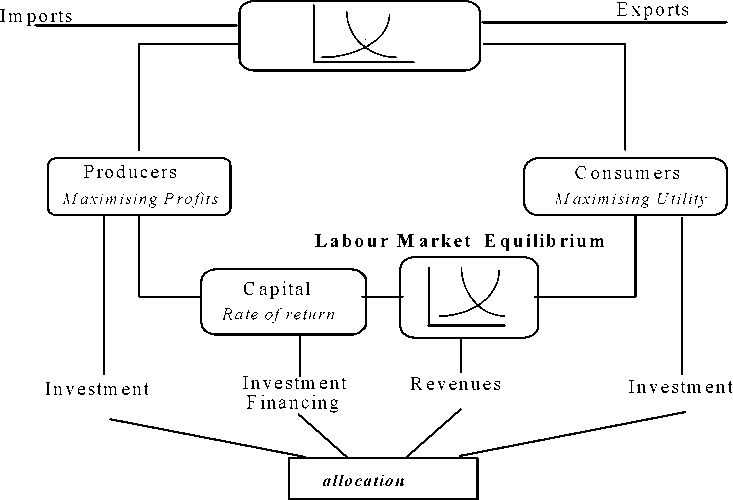pollutants, taking into account the transportation (between countries) and
transformation mechanism of the pollutants; in a final step the damage generated by
the concentration/deposition of pollutants is computed in physical units and monetised
through a valuation function.
- The model allows to calculate the welfare effects of various environmental policies,
such as taxes and various forms of pollution permits. It is also possible to consider
various systems for revenue recycling.
Figure 1 gives the basic scheme of the standard version of the GEM-E3 model.
Goods Market Equilibrium

PRODUCERS GOVERNMENT CONSUMERS FOREIGN
Income flows and Transfers

SURPLUS OR DEFICIT OF AGENTS
ENVIRONMENT
Figure 1: The standard GEM-E3 model
More intriguing information
1. Implementation of a 3GPP LTE Turbo Decoder Accelerator on GPU2. The open method of co-ordination: Some remarks regarding old-age security within an enlarged European Union
3. Fortschritte bei der Exportorientierung von Dienstleistungsunternehmen
4. An institutional analysis of sasi laut in Maluku, Indonesia
5. THE ECONOMICS OF COMPETITION IN HEALTH INSURANCE- THE IRISH CASE STUDY.
6. The name is absent
7. The effect of classroom diversity on tolerance and participation in England, Sweden and Germany
8. Unilateral Actions the Case of International Environmental Problems
9. The name is absent
10. Are Japanese bureaucrats politically stronger than farmers?: The political economy of Japan's rice set-aside program